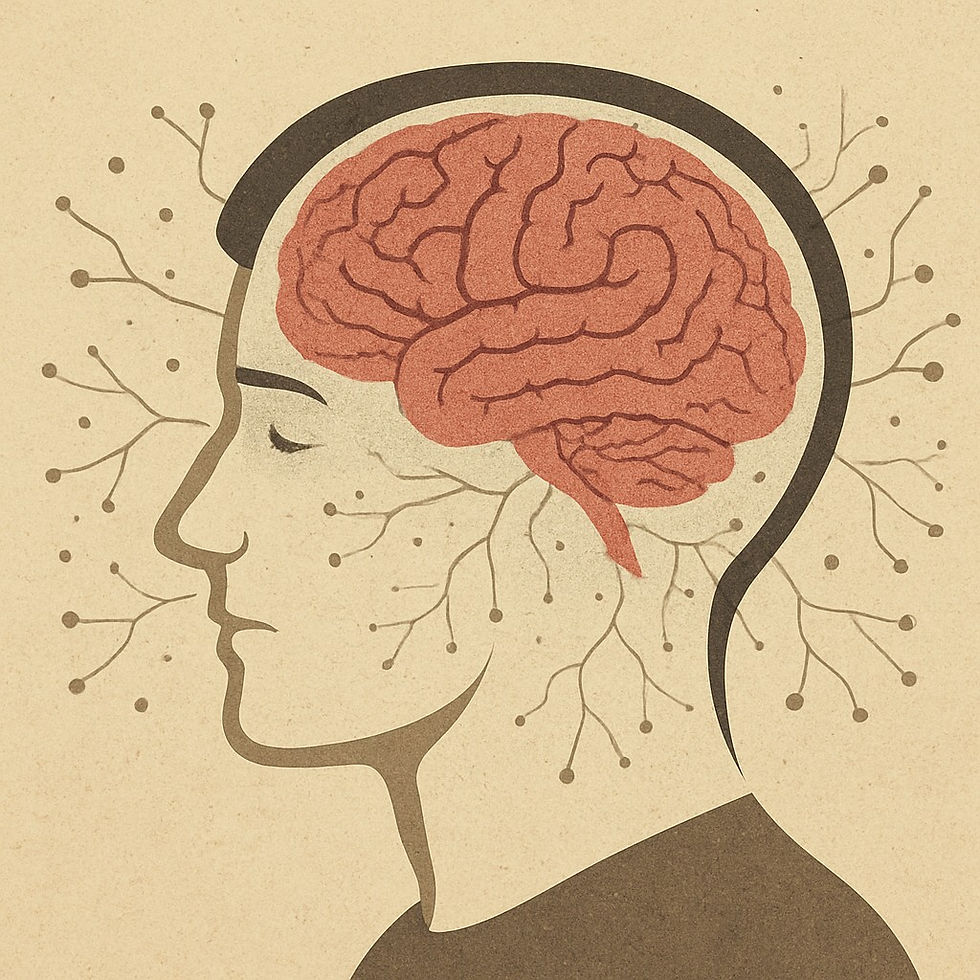When Worlds Collide: The Double Empathy Problem in Autistic Adults
- Tim Aiello, MA, LPC, NCC, ADHD-CCSP, ASDCS

- Apr 29
- 4 min read
Updated: Apr 30
By Tim Aiello, MA, LPC, NCC, ADHD-CCSP, ASDCS
Clinical Director - Myndset Therapeutics

For years, autistic people have been told that their social struggles stem from inherent deficits—things like lack of empathy, poor theory of mind, or an inability to pick up on "normal" social cues. But what if we've been viewing this all wrong? What if the real problem isn’t about deficits at all, but about a mismatch in communication styles and emotional understanding?
This is where the Double Empathy Problem comes in—a framework that finally puts words to what so many autistic adults have known all along: we’re not broken, we’re just different.
What Is the Double Empathy Problem?
The Double Empathy Problem (DEP) was first proposed by Dr. Damian Milton, an autistic researcher and sociologist. In simple terms, it suggests that the difficulties in communication between autistic and non-autistic people are mutual—both sides struggle to understand each other (Milton, 2012).
Instead of framing autistic individuals as lacking empathy or social cognition, DEP argues that both neurotypes bring their own cultural norms, emotional languages, and perceptual filters to the table. Misunderstandings aren’t one-sided—they’re relational.
It’s not that autistic people lack empathy. It’s that their empathy may look different or be triggered by different social-emotional cues. And neurotypical people often struggle to interpret the expressions or intentions of autistic individuals just as much as autistic people struggle to interpret theirs.
Let’s Talk About Empathy
Empathy isn’t a single skill—it’s multifaceted. It includes:
Cognitive empathy: Understanding another person’s thoughts or perspective
Affective empathy: Feeling what someone else is feeling
Expressive empathy: Communicating understanding in a socially recognizable way
Here’s the problem: society tends to overvalue expressive empathy, especially when it’s wrapped in neurotypical norms. For example, you’re expected to make eye contact, mirror facial expressions, and respond with certain vocal tones or words that are seen as comforting.
Many autistic adults do feel empathy—often deeply. But the way we show it may not match the neurotypical script. Maybe we look away to focus better, or we go quiet because we’re processing. Maybe we offer problem-solving instead of platitudes. That doesn’t mean we don’t care—it means we express care differently.
The Research Is Catching Up
Recent studies are starting to confirm what autistic adults have been saying for decades.
In 2020, Crompton and colleagues conducted a study in which autistic participants were paired in conversations with either other autistic individuals or with non-autistic individuals. The result? Communication between autistic pairs was just as effective—and in some cases more comfortable—than between autistic and non-autistic pairs (Crompton et al., 2020).
This supports the idea that social disconnects aren’t caused by autistic “deficits,” but by a mismatch in neurotypes. It’s like speaking two dialects of the same language—each makes perfect sense within its own group, but cross-dialect conversation requires more effort, translation, and patience.
How This Shows Up in Real Life
If you’re autistic, you’ve probably had experiences like these:
You're accused of being "rude" or "cold" when you were actually being honest or concise.
You miss someone's sarcasm or indirect communication, and they think you're naive or not paying attention.
You try to comfort someone with logic, but they wanted emotional validation first—and suddenly you're told you “lack empathy.”
You feel dismissed when expressing distress because it doesn’t match neurotypical expectations (e.g., you’re monotone, or overly intense).
This isn’t just frustrating—it can be deeply invalidating. And when repeated over time, these misunderstandings can lead to internalized shame, masking, and even trauma.
Reframing the Narrative
The Double Empathy framework gives us language to reframe these experiences.
Instead of seeing yourself as defective, you can recognize that communication is always co-created. That means it's not all on you to do the work of translating, masking, and contorting your expression.
Non-autistic people have a responsibility too—to learn, adapt, and understand different ways of relating. That includes professionals, educators, partners, and even parents.
When we shift the lens from “deficits” to differences, it becomes easier to foster mutual understanding. That’s the first step toward real inclusion—not just of autistic bodies, but of autistic minds and communication styles.
What Helps?
Shared Language: Create shared vocabulary in relationships—what words mean comfort, what actions mean support.
Explicit Communication: Don’t assume others “just know.” Clarify intentions, ask questions, check in directly.
Presume Competence: Assume that the person across from you has rich inner experiences, even if they express them differently.
Validate Autistic Empathy: Recognize that empathy may come in the form of problem-solving, parallel experiences, or acts of service.
Encourage Cross-Neurotype Curiosity: Both autistic and non-autistic people benefit from asking “How do you see this?” instead of assuming a one-size-fits-all approach.
Final Thoughts
The Double Empathy Problem reminds us that communication is never one-way. If you’re autistic, you’re not failing to connect—you’re just operating in a society that hasn’t learned your language yet. But the tide is turning. Research, advocacy, and community voices are changing the way we understand empathy, one conversation at a time.
You’re not too much. You’re not too intense. You’re not broken.
You’re communicating in a way that makes sense to you. And that is valid.
References
Crompton, C. J., Ropar, D., Evans-Williams, C. V. M., Flynn, E. G., & Fletcher-Watson, S. (2020). Autistic peer-to-peer information transfer is highly effective. Autism, 24(7), 1704–1712. https://doi.org/10.1177/1362361320919286
Milton, D. E. M. (2012). On the ontological status of autism: The 'double empathy problem'. Disability & Society, 27(6), 883–887. https://doi.org/10.1080/09687599.2012.710008
Chown, N. (2014). More on the double empathy problem: Why autistics can't be understood and non-autistics can't understand. Disability & Society, 29(10), 1664–1666. https://doi.org/10.1080/09687599.2014.966487




Comments